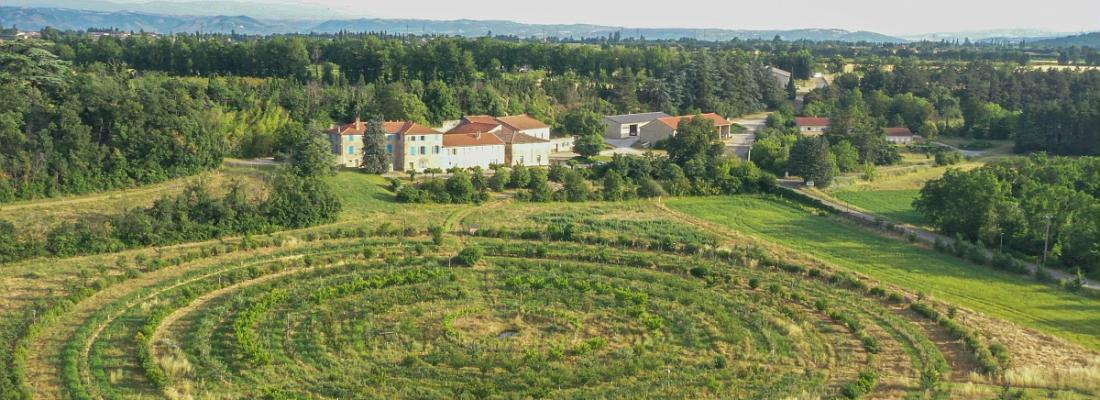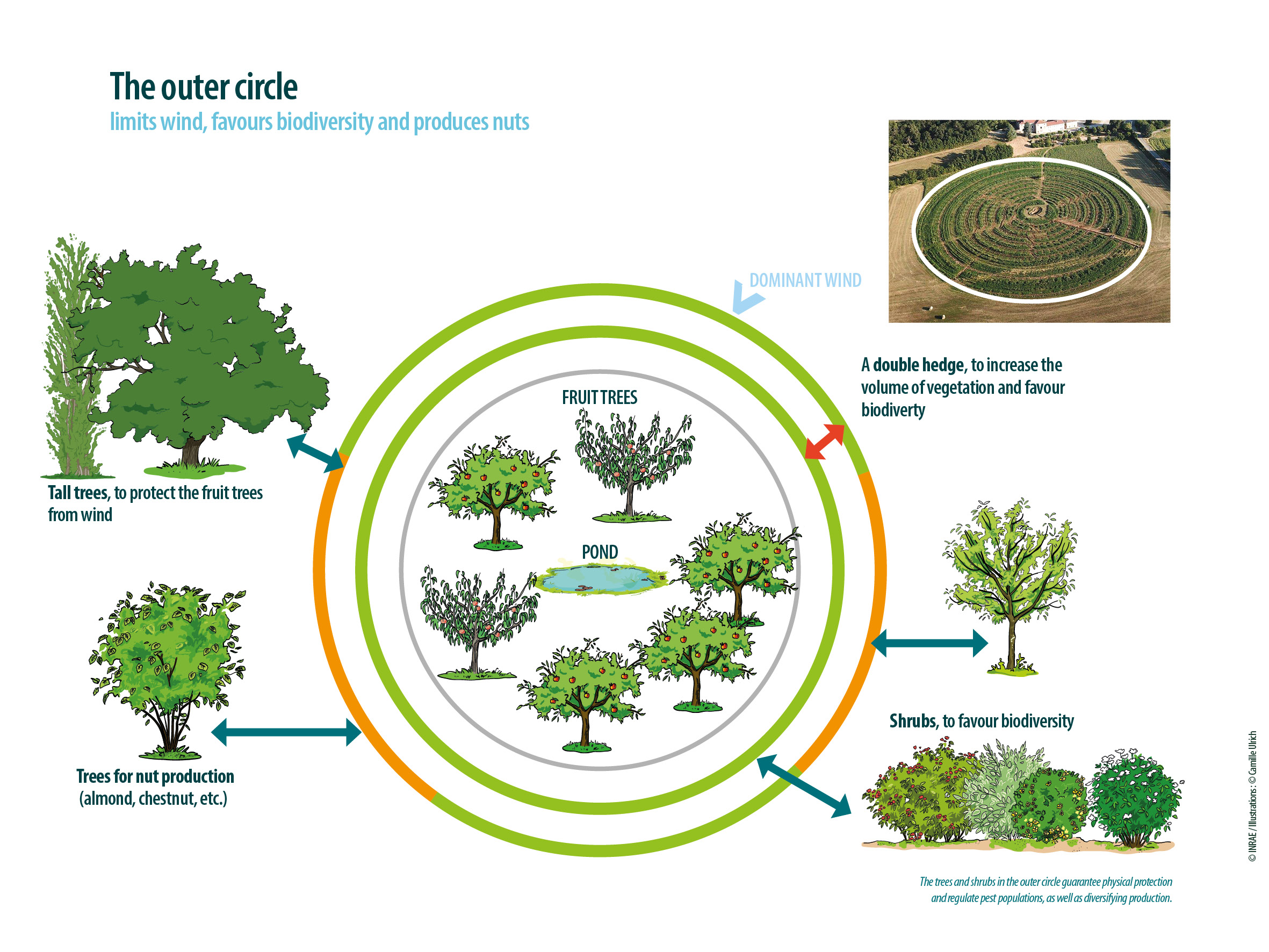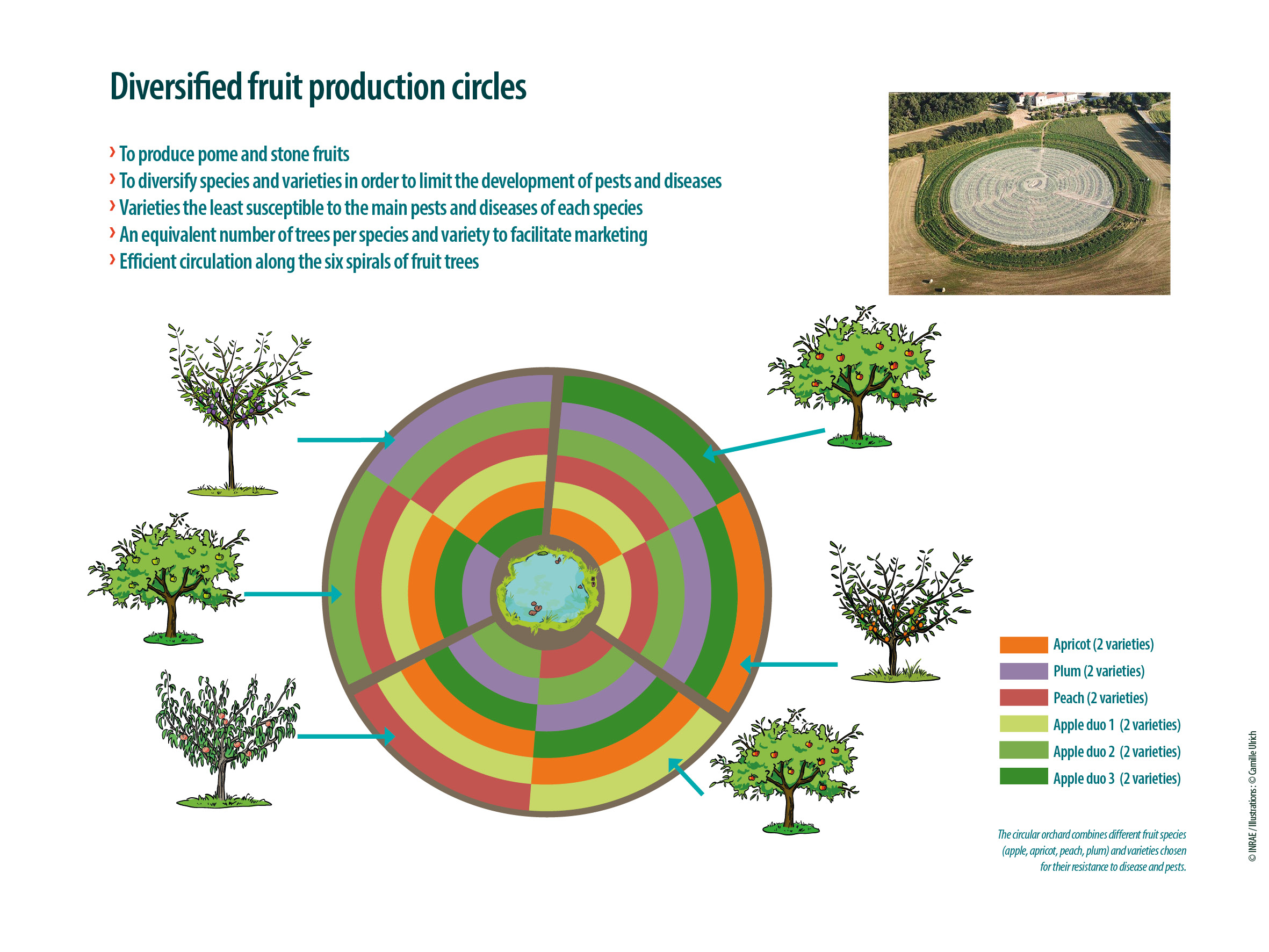Agroecology Reading time 6 min
The Gotheron orchard: when biodiversity becomes circular
Published on 04 November 2021

Project Z is a long-term project (2015-2030) during which several design and assessment phases for agroecological fruit production systems have been planned. The method adopted to limit input use is based on biodiversity and the innovative organisation of plants in the production space, aimed at limiting the introduction, spread, installation and impact of pests.
Gotheron is not just a simple orchard but a production space that associates several fruit species and varieties, service plants and regulation systems in order to create an environment highly hostile to pests. The first surprise is that the 1.5 hectare orchard is circular, a shape chosen to limit the surface of exchanges with the exterior. It is surrounded by a double, 500-metre long hedge that includes several almond and chestnut trees which both act as wind breaks and provide a barrier to limit the spread of pests.

The trees and shrubs in the outer circle guarantee physical protection and regulate pest populations, as well as diversifying production.
Illustrations: Camille Ulrich
An initial barrier to block pests
Nest boxes, raptor perches, piles of branches and areas of scree are installed along this initial barrier to favour the installation of beneficial predators such as insect-eating tits, birds of prey, reptiles and weasels (vole predators). This first barrier also represents a biodiversity zone that supplies food resources and habitats for beneficial fauna. This beneficial fauna includes predators and parasitoids, both vertebrates and invertebrates, which all contribute to regulate populations of fruit tree pests (aphids, voles, etc.). Any pests that cross this initial barrier reach a circular row of low-sensitivity apple trees which act as traps to fix the aphids attracted by this fruit species.
Attract beneficial fauna and repel pests
The next concentric circle is made up of various fruit trees and shrubs, and notably prospective species such as pomegranate and fig, introduced in a context of climate change. This circle is designed to protect the numerous apple, peach, plum and apricot trees in the inner circles where most of the production space is concentrated. All varieties have been selected for their natural resistance to disease.

The circular orchard combines different fruit species (apple, apricot, peach, plum) and varieties chosen for their resistance to disease and pests.
Illustrations: Camille Ulrich
In this zone, plants that attract beneficial organisms and repel certain pests (such as aromatic plants, flowered strips) have been planted at regular intervals in order to enhance the other measures. Legumes are also present to fix atmospheric nitrogen thanks to their symbiosis with soil bacteria, and are used after cutting to fertilise the fruit trees. Finally, the centre of the orchard contains a pond and a semi-wild area that constitute a valuable reservoir of functional biodiversity.
Studying the impact of this layout for 15 years
The orchard will reach maturity in four years’ time and will continue to be assessed for at least ten years more. The aim will be to determine its agronomic and environmental performance and the ecosystem services it provides in terms of regulation and support, and to understand the processes that have developed because of these management practices. Over this long period, scientists will be able to verify the impact of this spatial arrangement in terms of controlling pests and generating knowledge on how to build and manage such a system. Ultimately, this assessment will serve as a foundation for dynamic management of the agroecosystem.
*The 2016-2017 design phase was supported by the INRA Ecoserv and SMaCH metaprogrammes in the context of the SAFIR programme on “Agroecological Systems in Fruit Production: Innovation and Redesign”.
This orchard is one of the experimental sites for the Dephy EXPE Ecophyto ‘ALTO’ project (2018-2023) https://www6.paca.inrae.fr/ueri/Contrats-et-projets/Expe-DEPHY-Ecophyto-II-ALTO
THE DYNAMIC OF THE DESIGN AND THE GENERATION OF KNOWLEDGE
The project is based on a dynamic that enables local and international interactions with a broad range of actors in the sector (farmers, advisors, trainers, experimental scientists, researchers, etc.) focused on the approach, the layout and its results through the generation of jointly developed and shared knowledge. After the initial design phase of the circular orchar, other modules are planned, to be designed and planted using the same concept of agroecological design. These other modules, to be based on the other 10 hectares currently available, will also take account at the supra-plot scale of interactions between production areas and “production support” zones (e.g. islands of biodiversity, areas for producing fertilising resources).
